WORLDS OF WHITE LIGHT – I MONDI BIANCHI DELLA LUCE
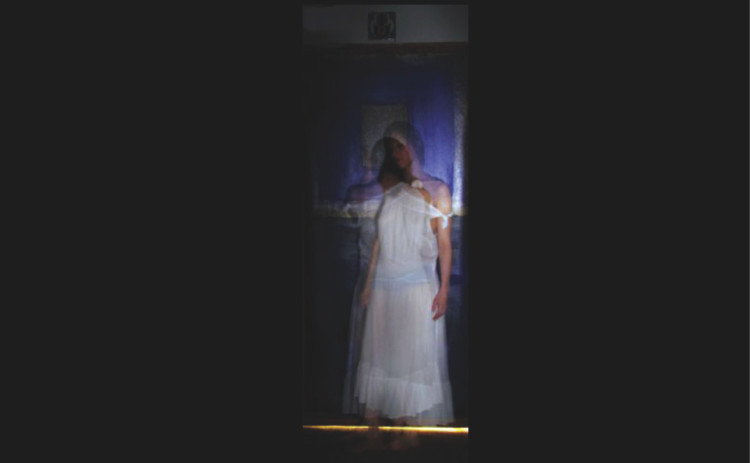
Barbara Schaefer
Assenza Presenza (Absence Presence)
Mostra fotografica presentata da Vittoria Biasi e Ruggero Passeri
Museo Comunale d’Arte Moderna di Senigallia
Dal 6 al 28 Maggio 2011 – Inaugurazione venerdì 6 Maggio, ore 21 –
Worlds of White Light
Text by Vittoria Biasi – All Texts are 1F mediaproject copyright. All Rights Reserved.
Space contains hidden worlds. Hidden to the eye, but not to those who can penetrate the secrets that science and art have always taken the liberty to explore. Barbara Schaefer’s exhibition is a tribute to the inseparable relationship of humanity’s capacity to see and to appear beyond existence.
Existence, in all its forms, travels in between the visible and invisible, between the known and unknown, in continuous motion of infinite possibilities.
Just remembering a little painting; paper painted with white paint and sand, entitled, “A Song From The Atlantic Ocean.” A work which Barbara Schaefer made for me in 1991, while looking at the ocean evokes an individual action that takes on various forms, struck by the astonishing vast sea, like an eternal navigator, evoking the image of Soukurov in the Russian Ark [i], or recalling the thoughts of Piero Manzoni.
The art of the twentieth century marks the entrance to a field without a focal point; an extended concept of absolute authoritarianism by which the work reveals existential ambiguity. Photography and its relationship with light, dare to question standard representations, posing alarming new perceptions.
In “Extremely Urgent,” Barbara Schaefer creates the idea of crossing, using space and collage with the logo of the U.S. express mail. In “The Curtain”, white space reveals the soul’s nakedness as the body’s defense, using photography inserted in painting.
I had the opportunity to follow Barbara Schaefer’s path during exhibitions that marked a deepening and a shift in her relationship with the concept of space, with white and with humanitarianism
In the collection, “Absence Presence,” for MUSINF, The Municipal Museum of Modern Art and Information, in Senigallia, Barbara Schaefer presents works entirely photographic, shot at night.
The work explores the richness of night light within the walls of the historic city of Rome or in her own loft; a dialogue between silence and passing images within space.
The photos come from a single shot, set on long exposure, like watching cinema that vaporizes and transforms. The work is not contructed but captured as life presents itself. Moment to moment, restoring a poetic sense of time. The wavering light reveals echos of haunting bright plasticity, elusive to the naked eye.
Emerging from whiteness of empty space, figures appear, beyond possible reference points. The emergence of the figures multiply and merge through white matter, empty space and shadows. “Assenza #1-5” seem contrary to the title by demonstrating the existence of an essence independent of the photographic medium, which is capable of hovering in space, to act as an aura of infinite existence.
The white of the figures, often absorbed by matter from the wall’s darkness, is a language that becomes extremely elastic through the convergence of light’s corpuscular motion.
The memory of light, unknown to us, places art at the mystery of creative language. Tarantata #1 and 2 constitute the elusive concept of dancing to liberate women’s suffering, such as the popular dance of the Pizzica Taranta in Southern Italy.
The artist creates work, respecting location, time, experience of place, in environments which support the behavior of light and its reflection in action.
The performance of that light that traces the parable of events between human presence and artistic sublimation signifies episodes which translate themselves in evanescent representations along the border of faint light in the meeting of absence and presence seen in her titles, Presence, Absence, Tarantata, Absence – Numinous – Presence, Absence –Precognition – Presence, Absence – Awakening – Presence, Transparency – Presence – Enlightenment, Presence – Relevance – Absence, The Dancer Returns Home, Continuum Movement and Ascension.
While bodies moving within the space capture and absorb fleeting passing light, creating volume and moisture, these result in the dematerialization of body imagery, allowing white shadows to emerge.
The photographic process developed by Barbara Schaefer recalls holography, where the collimated light beams, like lasers, give transparency to the three-dimensional image. The vaporized moist image quality recalls the phenomenon descriped by Aristotle in A Short Treatise On Natural History [ii]. According to the Greek philosopher, transformation of vision is the presence of a diaphonous mood-lit interior of the eye and air. The light passing through the air acts miraculously on one’s mood and makes colors and images visible. The effect, in some cases increase the excitement toward light’s behavior.
Barbara Schaefer does not use editing programs to create the work, but allows the phenomenon to occur on its own. The structure of the work is interconnected, taking place at the time of shooting and the discovery of a world beyond what she is photographing.
Vittoria Biasi
[i] Aleksandr Sokurov, Arca Russa, 2002
[ii] Cfr. Jean-Louis Schefer, Quelles sont les choses rouges? in Artstudion. 16, Monochromes, Parigi, Primavera 1990
I mondi bianchi della luce
Testo di Vittoria Biasi
Lo spazio contiene mondi celati allo sguardo di chi vuole penetrare i segreti diffusi, che la scienza e l’arte esplorano da sempre, riconoscendone l’indipendenza, l’autorità. La mostra di Barbara Schaefer vuole essere un omaggio al rapporto inscindibile dell’uomo con la capacità di vedere e dell’apparire nell’oltre di un’esistenza.
L’esistenza, con ogni sua forma, scorre tra il visibile e l’invisibile, tra il noto e il non noto, all’interno di un moto continuo tra infinite possibilità.
L’azione individuale scorge con stupore di trovarsi sulla soglia e davanti un grande mare da ‘navigare sempre e vivere sempre’, rievocando l’immagine di Soukurov in Arca russa [i] o rammentando il pensiero di Piero Manzoni o semplicemente ricordando una piccola opera, un carta dipinta con segni bianchi A song from the Atlantic Ocean, donatami nel 1991 dalla stessa artista. L’aveva realizzata guardando l’oceano!
L’arte del Novecento segna l’ingresso in uno spazio privo di un punto focale, un concetto di distesa assoluta, autoritaria con cui l’opera dialoga rivelando ambiguità esistenziali. La fotografia e il rapporto con la luce osano, interrogano possibili rappresentazioni, inquietanti per la nuova percezione.
Ho avuto la possibilità di seguire il percorso di Barbara Schaefer, di soffermarmi sul suo linguaggio, in occasioni di mostre che hanno segnato il passaggio nel rapporto con la profondità del concetto di spazio, bianco, umanista.
In Extremely Urgent, Barbara Schaefer crea l’idea dell’attraversamento spaziale utilizzando, con la tecnica del collage, il logo della posta rapida americana. In “The curtain”, lo spazio è il luogo bianco, da cui emerge la nudità dell’anima difesa dal corpo, nel linguaggio della fotografia inserita nella pittura.
Nella raccolta Assenza / Presenza, proposta per gli spazi del (Museo Comunale d’Arte Moderna e dell’Informazione) MUSINF di Senigallia, l’artista presenta opere interamente fotografiche in cui elabora la creatività dello spazio nell’incontro con la luce notturna.
Le opere esplorano la ricchezza dello spazio notturno tra le mura della città di Roma o della sua abitazione, nel dialogo con il silenzio dei luoghi e delle immagini. Le foto nascono da uno scatto unico, dopo un’esposizione che vaporizza la visione. Gli scorci di vita riportano una poetica del tempo, del suo scorrere tra ondeggiamenti di luce che rivelano visioni inquietanti, eco di plasticità luminose, sfuggenti all’occhio nudo.
Il biancore del vuoto emerge dallo spazio di un istante assumendo una figura riconoscibile nei tratti, secondo un tradizionale modo di vedere. Aldilà di possibili riferimenti è affascinante l’emersione dei bianchi dal rapporto materia – vuoto, ombra-materia. Le opere Assenza (1-5) sembrano negare il titolo stesso dimostrando l’esistenza di un’essenza indipendente dal medium fotografico, capace di aleggiare nello spazio, di proporsi come aura di un infinito esistere.
Il bianco delle figure, spesso assorbito dalla materia, dall’oscurità del muro, diviene linguaggio estremo, plasticità luminosa tra la convergenza dei moti corpuscolari. La memoria della luce, a noi sconosciuta, pone l’arte di fronte al mistero dei suoi linguaggi creativi. Le opere Tarantata (1- 2) configurano il concetto di danza sfuggente all’umana catalogazione, come la popolare danza dell’Italia meridionale per proteggere le emozioni del mondo femminile.
L’artista impagina le opere rispettando il percorso, il tempo, l’esperienza dei luoghi, degli ambienti, che fanno da supporto al comportamento della luce e alla sua azione di riflessione.
I titoli – Presence, Absence, Tarantata, Absence-numinous-presence, Absence- precognition –presence, Absence – awakening – presence, Transparency – presence – enlightenment, Presence – relevance – absence, The dancer returns home, Continuum movement, Ascensione – tracciano la parabola di eventi, di performances della luce tra presenze umana e sublimazioni artistiche. Gli episodi si traducono in rappresentazioni evanescenti lungo la frontiera labile della luce nell’incontro dell’assenza, della presenza. Le oggettualità, le opere d’arte presenti nei differenti ambienti, i personaggi che si muovono nello spazio definito, vissuto dell’abitazione, sembrano svuotati dalla luce, che assorbe le connotazioni, penetra i volumi, ne restituisce un’immagine umida. Ne deriva una situazione in cui è possibile percepire una dematerializzazione dei corpi reali accanto ad un incoraggiamento per le ombre bianche ad esistere plasticamente. Il procedimento fotografico elaborato da Barbara Schaefer rammenta l’olografia, dove i fasci luminosi, collimanti (del laser), restituiscono l’immagine tridimensionale dell’oggetto attraversato. La qualità dell’immagine, definita umida, vaporosa riconduce alla descrizione del fenomeno visivo narrato da Aristotele in Piccolo trattato di storia naturale.[ii] Per il filosofo greco la trasformazione della realtà in visione avviene per la presenza dell’umore diafano all’interno dell’occhio e anche dell’aria. La luce, attraversando l’aria, agisce sul miracoloso umore e rende visibile il colore e l’immagine. La spiegazione di alcuni procedimenti aumento l’emozione verso il comportamento della luce. L’artista non interviene sullo scatto con i programmi di ritocco nell’intento di restituire il fenomeno. La struttura dell’opera è in due momenti legati tra loro: il momento dello scatto e la scoperta di un mondo oltre ciò che sta fotografando.
Vittoria Biasi
[i] Aleksandr Sokurov, Arca Russa, 2002
[ii] Cfr. Jean-Louis Schefer, Quelles sont les choses rouges? in Artstudion. 16, Monochromes, Parigi, Primavera 1990
Position the cursor on the images to view captions, click on images to enlarge them.
Posizionare il cursore sulle immagini per leggere le didascalie; cliccare sulle immagini per ingrandirle.
Barbara Schaefer
Assenza Presenza (Absence Presence)
Mostra fotografica presentata da Vittoria Biasi e Ruggero Passeri
Museo Comunale d’Arte Moderna di Senigallia
Inaugurazione venerdì 6 Maggio, ore 21
dal 6 al 28 Maggio 2011
My Art
My visual work has been greatly informed and influenced by many years of dancing and a practice know as Continuum Movement, which recognizes the body’s intelligence with its fluid molecules acting as a fundamental choreographer of movement.
I always begin my process with dance, as movement informs me and allows a fluid and enlightening relationship with the visual. In addition, Rome, where I resided many years and where I return often, has had a significant impact and influence on my work. The city’s beauty has inspired me toward refinement and aesthetic choice, while its omnipresent history such as the facades of old Rome, weathered with patina, permeates my work. Italian culture and language, so rich and lively, has compelled me to think and act in ways I would not otherwise have discovered. I see this in my work in the richly textured, un-stretched canvases I use, which appear to be part of the wall, and are often reminiscent of Italian fresco paintings. Also, in my recent photography a sense of antiquity resides in my work despite the use of modern technology.
My work with digital photography evolved from my relationship with the computer and technology. At first, the photographic images, printed on film transparencies, were integrated into my paintings. The digital photograph itself then became comprehensive and self-sufficient – with its highly sensitive play of light, texture and surprise – for my concerns with capturing the invisible becoming visible.
In December 2007, I was asked to participate in the exhibition/performances, Pulling Down, honoring the Day of Memory, held at the auditorium in Roma, in January 2008. I was staying in the neighborhood of the Ghetto and spent many hours walking the streets both in the day and at night in preparation for the exhibition. I sensed that the streets themselves would let me know what they wanted me to express – that I would find my inspiration there – since it was there where the Jews were forced to evacuate their homes.
Coming from a Jewish family, I was interested in exploring my origins and the historical events that took place in those streets during the Holocaust, from an artist perspective. From there, the exploration of absence and presence was born.
The Concept
In absence there is presence. Without presence there is absence. Empty streets and houses hold a haunting feeling as though the streets themselves know that something is missing. It has been said that the spirit often returns to the places it has known, trying to make sense of its experiences and to find its body.
Presence requires inhabiting the body.
Presence is essential to all spiritual practices, religions and to life. If we are not present we are missing our experience and the opportunity at hand. With this in mind an exploration of presence and absence evolved. Although I establish my parameters, my frame, what takes place within that context is unknown, subject to movement and presence. Shooting only at night there is absence of light.
I considered that in terms of movement and what I know about the fluid system – of which the body and the entire galaxy is a part of – when there is any isolating phenomena, as there was during the Holocaust, the fluid will compress, forming a barrier to the world, stifling circumstance. This results in a kind of “hologram” of survival and can be read as a diary of existence.
The social consequences of these behavior barriers eventuate in a loss of fundamental resonance resulting in an inability to feel. The holocaust was an example of this condition.
Technique
These digital photographs are taken at night and in one shot. The process is called painting with light. They have not been created on Photoshop. I use Photoshop only to enhance and clean up the photos.
Barbara Schaefer
125 Green Street, 4E
Brooklyn, NY 11222
www.barbaraschaeferart.com
lorcab@aol.com
barbara.s@barbaraschaeferart.com
+1.917.686.6205 – +39.334.303.3673 – skype: lorcabjs


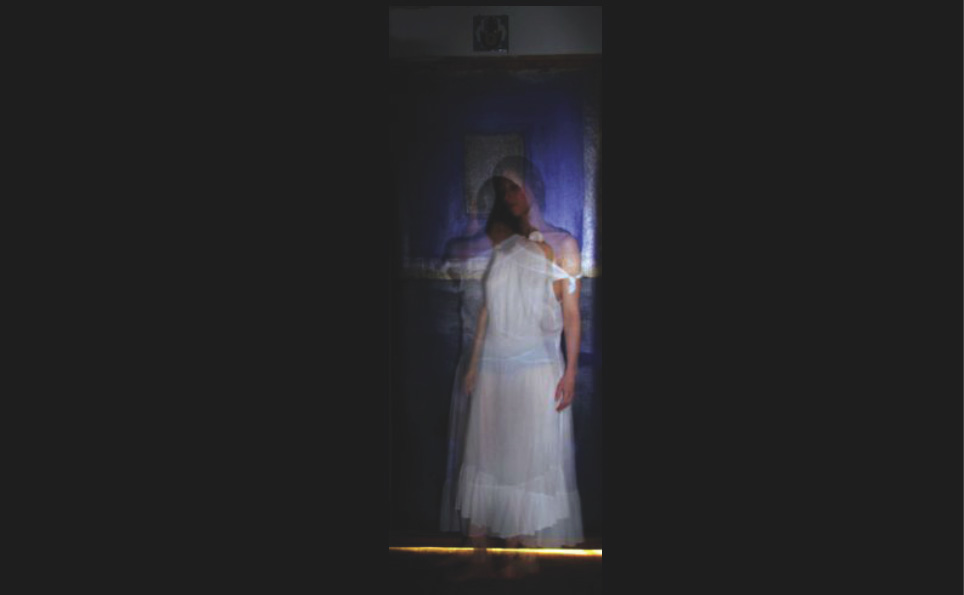
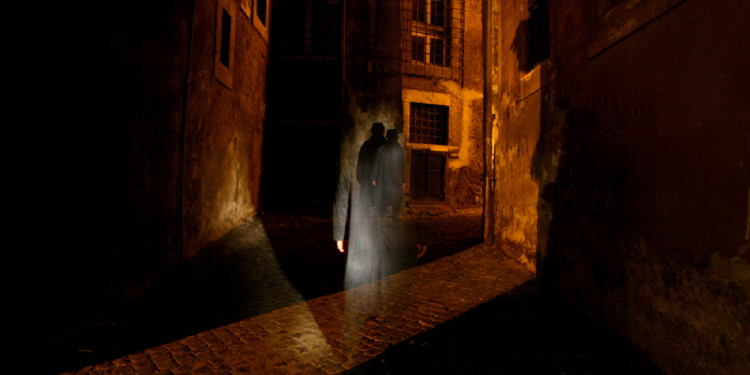
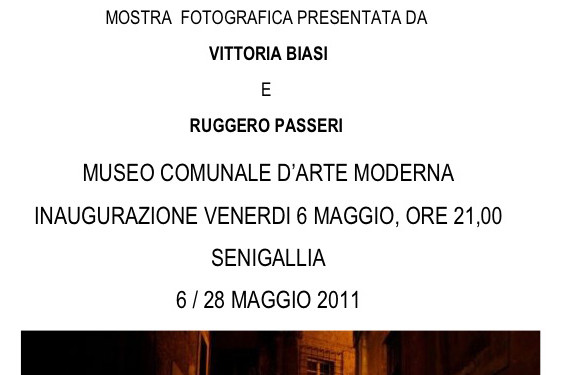
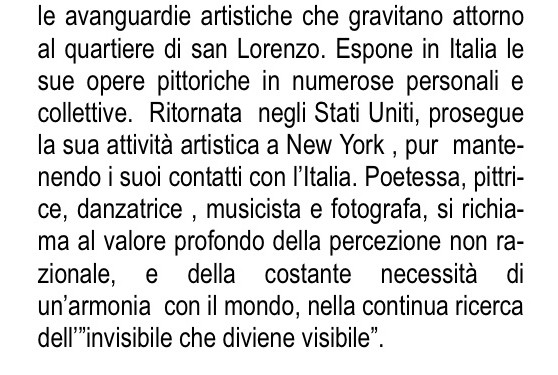
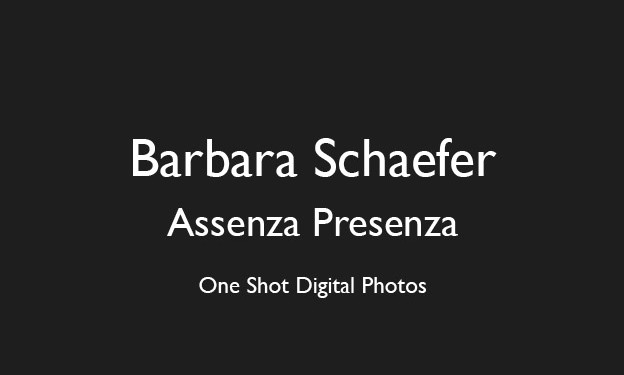
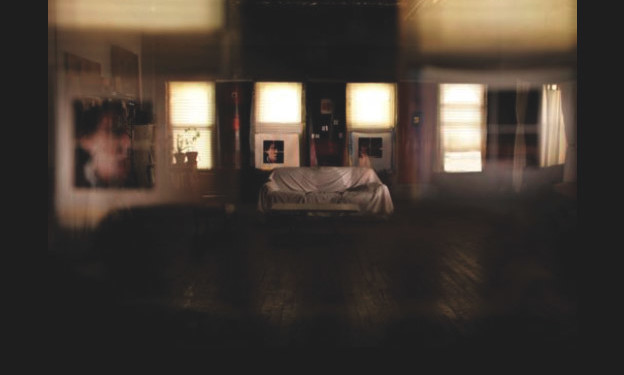
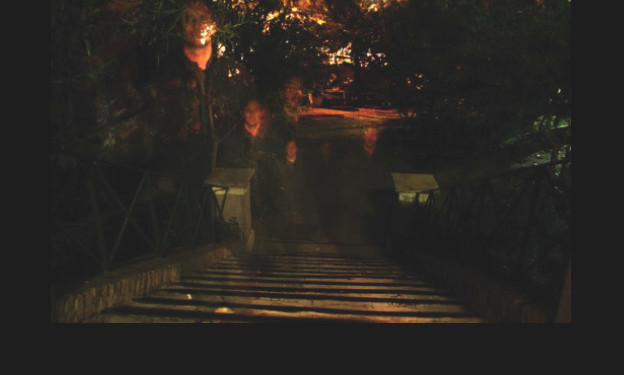

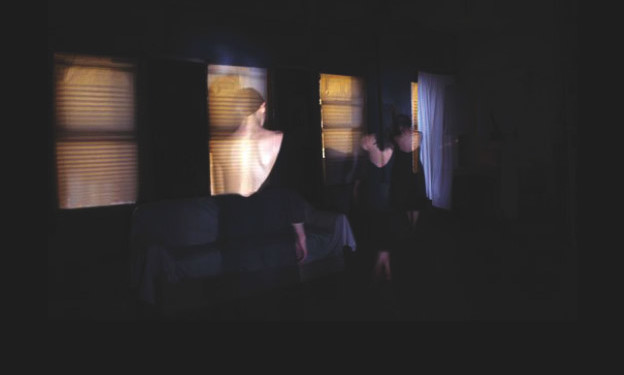
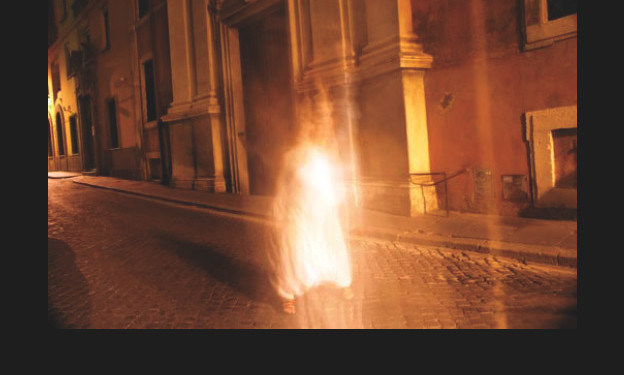
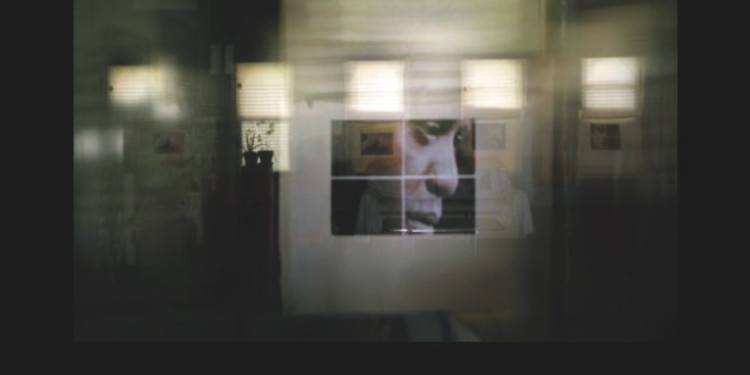
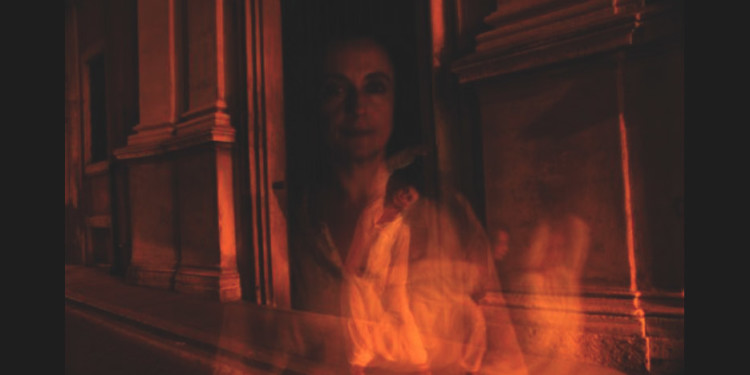
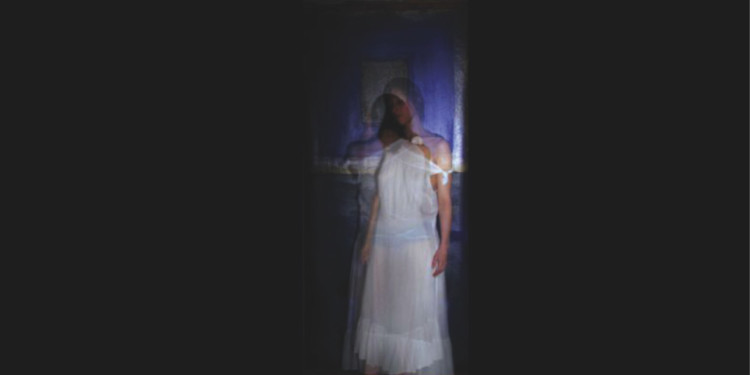
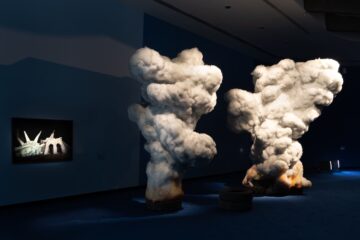
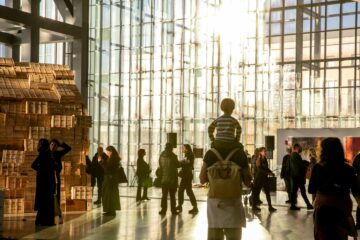

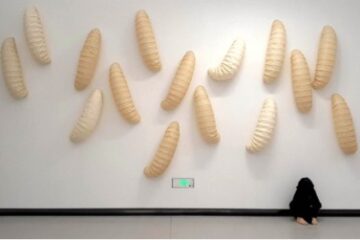

1 Comment
un bellissimo articolo!!! grazie :-)))